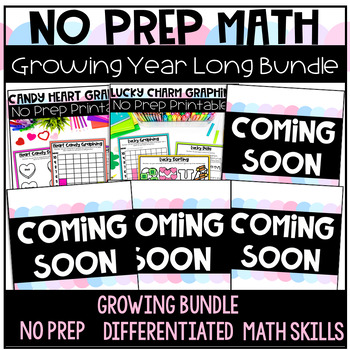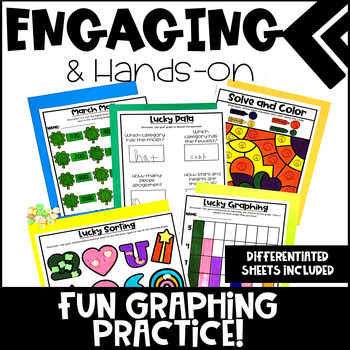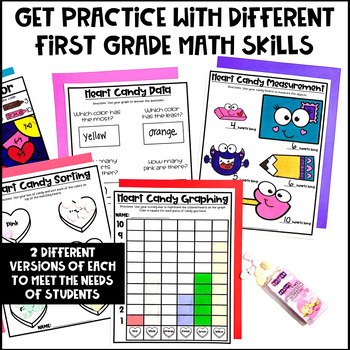No Prep Math and Graphing Sheets Year Long Growing Bundle
- Zip
Products in this Bundle (2)
Description
Are you looking for a fun, engaging, and no prep math activity to celebrate holidays with your students? You'll love these print and go math worksheets practice TONS of different math skills with different fun themes!
These print-and-go sheets will get students practing coins, telling time to the hour/half hour, and so much more! They'll love graphing with Lucky Charm marshmallows and candy hearts they'll love to eat. There are two versions of each sheet included to easily differentiate for your little learners.
These are the perfect addition to your holiday math plans. Complete these whole group, as a center, use as time fillers, and so much more. Your students will LOVE these engaging math activities while getting great practice. Check out the preview to see exactly what's included!
BUNDLE INCLUDES:
- Engaging Graphing Practice
- Math Skills for First Grade Standards
- No Prep Printables
- Growing Year Long Bundle
- 2 Versions of Each Sheet for Differentiation
No Prep Candy Heart Graphing for Valentine's Day
No Prep Lucky Charm Graphing for St. Patrick's Day
HOLIDAYS COMING SOON:
- Easter
- End of the Year
- Back to School
- Halloween
- Christmas
TRY BEFORE YOU BUY!
Click here to try a FREEBIE!
QUESTIONS OR CONCERNS
Email me at lindsaynsauer@gmail.com if you have any questions or concerns about this product. If you are not sure that this product will work for you, please check out one of the freebies. Keep in mind that the preview shows you what the game is going to look like.
Click the Green ★ to follow my store and get notifications when new resources arrive including freebies! New products are always 50% off for the first 24 hours they are posted!
I'd Love to Connect!
CUSTOMER TIPS
How to get TPT credit on future purchases:
Please go to the MY PURCHASES page. Under each purchase, you will see a PROVIDE FEEDBACK button. Click on it, leave feedback, and then you will receive credits for your purchase that you can use on future items (AS IN FREE MONEY to use on TPT)! I do read all the feedback! I can't respond to all of them, but I do value your feedback!
Thank you!
Lindsay Sauer ❤️





